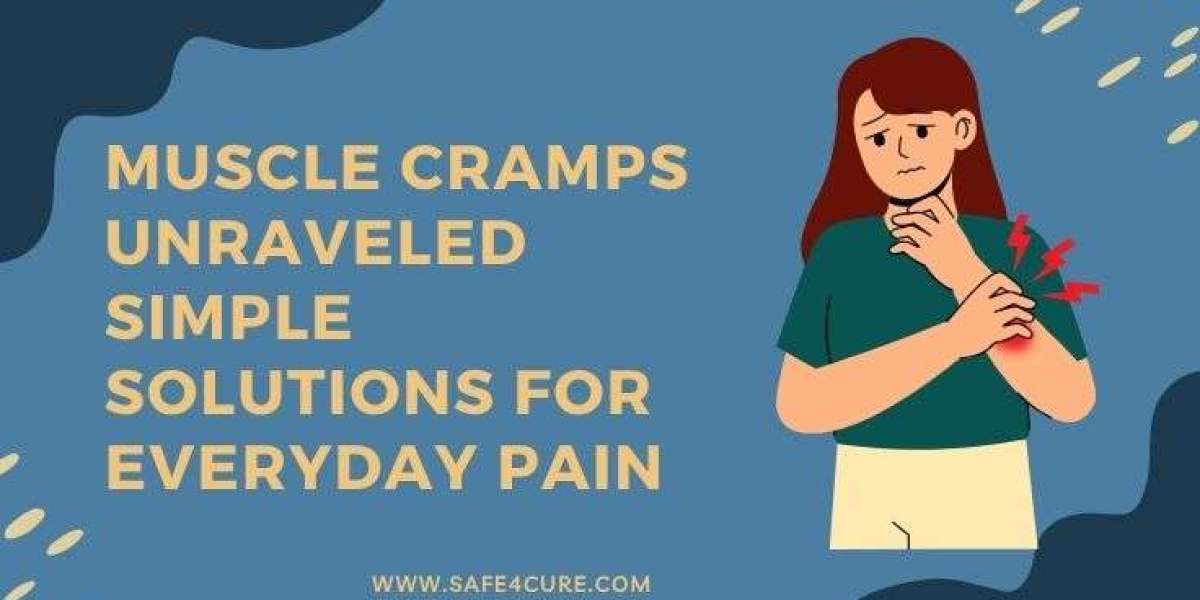Exercise-induced muscle cramps are among the most common and frustrating issues faced by athletes and fitness enthusiasts. These sudden, involuntary muscle contractions can quickly turn a great workout into a painful experience, leaving you questioning what went wrong and how to stop it from happening again. By understanding how muscle function and cramping are connected, we can create more effective strategies for prevention and treatment.
Post-workout muscle cramps occur when muscle fibers contract intensely and are unable to relax properly. This painful issue affects millions of people whether you’re a weekend runner or a professional athlete. Cramping can range from mild discomfort to severe, disabling muscle spasms. Although most cramps go away on their own, the pain and interruption they cause make prevention and proper care essential for anyone who exercises regularly.
The link between exercise and muscle cramps involves several body systems, including your muscles, nervous system, blood flow, and hydration levels. When any of these systems are under stress or out of balance, the chances of developing muscle cramps rise sharply. In such cases, using appropriate muscle cramps medicine may help relieve symptoms and support faster recovery.
The Science Behind Exercise-Related Muscle Contractions
To truly understand why muscles cramp after exercise, we need to examine what happens inside your muscle fibers during physical activity. When you exercise, your muscles require increased amounts of oxygen, nutrients, and electrical signals to function properly. This complex coordination involves your brain sending signals through your nervous system to initiate muscle contractions, while your circulatory system delivers the necessary fuel and removes waste products.
During intense or prolonged exercise, several changes occur within your muscle tissue that can predispose you to cramping. Your muscle fibers accumulate metabolic byproducts, experience shifts in electrolyte concentrations, and may develop areas of reduced blood flow. These changes can disrupt the normal balance between muscle contraction and relaxation, leading to the characteristic forceful contractions we recognize as cramps.
The timing of post-exercise cramps often surprises people because they frequently occur when muscles are at rest rather than during peak activity. This delayed onset happens because your body continues processing the effects of exercise even after you stop moving. As your muscles cool down and your circulation patterns change, areas of tension or imbalance become more apparent, potentially triggering cramping episodes.
Primary Causes of Leg Cramps and Full Body Muscle Spasms
The causes of leg cramps after exercise often differ from those affecting other muscle groups, though many underlying mechanisms remain similar. Leg muscles, particularly in your calves and thighs, bear significant load during most forms of exercise and are especially susceptible to fatigue-related cramping. These large muscle groups also contain complex networks of blood vessels and nerves that can become compromised during intense physical activity.
Dehydration represents one of the most significant contributors to all muscles cramping up during or after exercise. When your body loses fluids through sweating, the concentration of electrolytes in your blood and muscle tissue changes dramatically. This imbalance affects how your nerves communicate with your muscles and can trigger widespread cramping that may progress to full body cramps in severe cases.
Electrolyte imbalances, particularly involving sodium, potassium, calcium, and magnesium, create conditions where your muscles cannot properly regulate contraction and relaxation cycles. Each of these minerals plays a specific role in muscle function, and deficiencies or excesses can lead to increasingly severe cramping episodes. Understanding these relationships helps explain why some people experience isolated leg cramps while others develop more generalized muscle spasms.
Muscle fatigue and overuse create additional risk factors for post-exercise cramping. When you push your muscles beyond their current conditioning level or maintain challenging positions for extended periods, the microscopic damage and energy depletion that result can trigger protective spasms. These cramps often occur in the specific muscle groups that were worked hardest during your exercise session.
When Muscle Cramps Signal Underlying Health Conditions
While most exercise-related muscle cramps result from temporary imbalances or fatigue, understanding what diseases cause muscle cramps helps identify when professional medical evaluation becomes necessary. Certain chronic conditions can make you more susceptible to severe body muscle cramps and may require specific management strategies beyond standard prevention techniques.
Diabetes can significantly increase your risk of developing muscle cramps through multiple mechanisms. High blood sugar levels can damage nerves that control muscle function, while poor circulation associated with diabetes reduces the delivery of nutrients to muscle tissue. People with diabetes often experience more frequent and intense cramping episodes, particularly in their legs and feet.
Kidney disease affects your body's ability to maintain proper fluid and electrolyte balance, creating conditions where even mild exercise can trigger widespread muscle spasms. The kidneys normally regulate the concentration of minerals in your blood, and when this function becomes impaired, your muscles may respond unpredictably to physical stress.
Thyroid disorders, both overactive and underactive thyroid conditions, can alter your muscle metabolism and increase cramping susceptibility. These hormonal imbalances affect how your muscles use energy and respond to nerve signals, often resulting in more frequent episodes of painful muscle cramps during and after physical activity.
Peripheral artery disease restricts blood flow to your muscles, particularly during exercise when oxygen demands increase significantly. This condition commonly causes cramping in the legs during walking or other activities, and the symptoms may persist or worsen during the recovery period following exercise.
Understanding Muscle Cramps When Stretching
The occurrence of muscle cramps when stretching presents a particularly frustrating paradox for many people. Stretching is widely recommended for preventing muscle cramps, yet some individuals consistently experience cramping during their stretching routines. This phenomenon occurs because stretching places specific demands on your muscles that can trigger spasms under certain conditions.
When you stretch a muscle, you're essentially lengthening the muscle fibers while they're in a relaxed state. However, if your muscles are already fatigued, dehydrated, or experiencing electrolyte imbalances, the stretching motion can activate protective reflexes that cause sudden contractions. This explains why cramping during stretching often occurs after intense workouts when your muscles are already stressed.
The technique and timing of your stretching routine significantly influence your risk of experiencing cramps during these activities. Aggressive or bouncing stretches can trigger reflexive muscle contractions, while holding stretches for too long in compromised muscle tissue can overwhelm the muscle's ability to maintain relaxation. Understanding proper stretching principles helps minimize these risks while still gaining the benefits of improved flexibility.
Temperature also plays a crucial role in stretch-induced cramping. Cold muscles are less pliable and more likely to respond defensively to stretching motions. This is why many fitness professionals recommend warming up before stretching and why you might notice more cramping during outdoor activities in cold weather or in air-conditioned gyms immediately after sweating.
Managing After Cramps Muscle Pain and Recovery
The period following a muscle cramp often involves lingering discomfort that can persist for hours or even days after the initial spasm resolves. This after cramps muscle pain results from the intense contraction forces generated during the cramping episode, which can cause microscopic damage to muscle fibers and surrounding tissues. Understanding how to manage this recovery phase helps minimize discomfort and prevents the development of chronic muscle tension.
Immediately following a cramping episode, your primary goal should be gentle restoration of normal muscle length and blood flow. Light massage using long, smooth strokes toward your heart can help reduce muscle tension and improve circulation to the affected area. Avoid aggressive manipulation or deep pressure, which might trigger additional spasms in sensitized muscle tissue.
Heat therapy becomes particularly beneficial during the recovery phase, as it promotes blood flow and helps relax tense muscle fibers. Warm baths, heating pads, or warm compresses applied for 15-20 minutes at a time can significantly reduce post-cramp discomfort. However, avoid excessive heat that might cause burns or further dehydration, particularly if you're still recovering from an intense workout.
Gentle movement and light activity often prove more effective than complete rest for resolving post-cramp muscle pain. Walking, easy swimming, or simple range-of-motion exercises help maintain blood flow and prevent the development of muscle stiffness. The key is keeping the activity level well below the intensity that triggered the original cramping episode.
Comprehensive Muscle Cramps Treatment Approaches
Effective muscle cramps treatment requires a multifaceted approach that addresses both immediate symptom relief and long-term prevention strategies. The most successful treatment plans combine immediate interventions for active cramping episodes with lifestyle modifications designed to reduce the frequency and severity of future occurrences.
During an active cramping episode, your immediate response should focus on safely stopping the spasm and restoring normal muscle function. Gentle stretching in the opposite direction of the cramp can help break the contraction cycle, but this must be done carefully to avoid injury. For example, if you're experiencing a calf cramp, slowly flex your foot upward while keeping your leg straight to counteract the spasm.
Hydration plays a crucial role in both treating active cramps and preventing future episodes. However, the type and timing of fluid replacement matter significantly. Plain water may not be sufficient if you've lost substantial electrolytes through sweating, and excessive water intake without electrolyte replacement can actually worsen cramping by diluting your blood's mineral content.
Professional massage therapy can provide significant benefits for individuals who experience frequent or severe muscle cramping. Skilled therapists can identify areas of chronic muscle tension that predispose you to cramping and use specific techniques to address these problems. Regular massage sessions may help reduce both the frequency and intensity of cramping episodes over time.
Muscle Cramps Medicine and Medical Interventions
When lifestyle modifications and basic treatment approaches prove insufficient, muscle cramps medicine may become necessary to manage severe or persistent symptoms. Understanding the various pharmaceutical options available helps you work effectively with healthcare providers to develop appropriate treatment strategies.
Over-the-counter pain relievers, particularly those with anti-inflammatory properties, can help manage the discomfort associated with severe cramping episodes. Medications like ibuprofen or naproxen may reduce inflammation in affected muscle tissue and provide pain relief during the recovery period. However, these medications should be used judiciously and according to package directions, as excessive use can interfere with your body's natural healing processes.
Prescription muscle relaxants may be appropriate for individuals who experience frequent, severe cramping that interferes with daily activities or sleep. These medications work by reducing nerve signals that trigger muscle contractions, but they often cause drowsiness and other side effects that may limit their usefulness for active individuals.
Electrolyte supplements represent another category of medical intervention that can be highly effective for certain types of exercise-related cramping. Magnesium supplements, in particular, have shown promise for reducing the frequency of muscle cramps in some individuals. However, electrolyte supplementation should be guided by medical professionals and based on actual deficiencies identified through blood testing.
Prescription medications specifically designed for chronic cramping conditions may be necessary for individuals whose symptoms are related to underlying medical conditions. These might include medications for nerve pain, circulation problems, or hormonal imbalances that contribute to muscle cramping.
Essential Precautions and Prevention Strategies
Preventing muscle cramps requires a comprehensive approach that addresses all the major contributing factors we've discussed. The most effective prevention strategies focus on maintaining optimal hydration and electrolyte balance, conditioning your muscles appropriately for your activity level, and recognizing early warning signs that indicate increased cramping risk.
Proper hydration begins well before your exercise session and continues throughout your workout and recovery period. A good rule of thumb is to consume 16-20 ounces of fluid 2-3 hours before exercise, another 8 ounces 15-20 minutes before starting, and 6-8 ounces every 15-20 minutes during activity. However, these guidelines may need adjustment based on your individual sweat rate, environmental conditions, and exercise intensity.
Progressive conditioning represents another crucial element in cramp prevention. Sudden increases in exercise intensity, duration, or frequency can overwhelm your muscles' adaptive capacity and trigger cramping episodes. Following the 10% rule, which suggests increasing your training load by no more than 10% per week, helps ensure your muscles have adequate time to adapt to new demands.
Environmental awareness plays a significant role in cramp prevention, particularly regarding temperature and humidity conditions. Hot, humid environments increase your fluid and electrolyte losses while making it more difficult for your body to regulate temperature. When exercising in challenging conditions, you may need to reduce intensity, increase rest periods, and pay extra attention to hydration strategies.
Frequently Asked Questions
What's the difference between a muscle cramp and a muscle strain?
Muscle cramps involve involuntary contractions that cause temporary pain and stiffness but typically don't result in lasting tissue damage. Muscle strains, on the other hand, represent actual tears in muscle fibers that can cause persistent pain, swelling, and functional limitations. Cramps usually resolve within minutes to hours, while strains may require days or weeks of recovery time.
Why do my muscles cramp more frequently as I get older?
Age-related changes in muscle mass, nerve function, circulation, and overall conditioning contribute to increased cramping susceptibility. Older adults also tend to have reduced fluid reserves and may take medications that affect electrolyte balance. Additionally, age-related decreases in physical activity can lead to muscle deconditioning that makes cramping more likely during exercise.
Can certain foods help prevent muscle cramps?
Foods rich in potassium, magnesium, and calcium can support proper muscle function and may help reduce cramping frequency. Bananas, leafy green vegetables, nuts, seeds, and dairy products provide these essential minerals. However, a balanced diet is more important than focusing on specific "anti-cramp" foods, and severe electrolyte imbalances usually require more targeted interventions.
Should I continue exercising if I frequently get muscle cramps?
Frequent muscle cramps often indicate that modifications to your exercise routine are needed rather than complete cessation of activity. Consider reducing intensity, improving your warm-up routine, addressing hydration and nutrition factors, or consulting with a healthcare provider to rule out underlying medical conditions. Stopping exercise entirely may actually worsen the problem by allowing further muscle deconditioning.
When should I seek medical attention for muscle cramps?
Consult a healthcare provider if you experience severe cramps that don't respond to basic treatment measures, cramping that occurs without exercise or other obvious triggers, cramps accompanied by significant swelling or skin changes, or cramping that interferes with your sleep or daily activities. Additionally, sudden changes in cramping patterns or the development of full-body cramping episodes warrant medical evaluation.
Are there any warning signs that a cramp is about to occur?
Many people notice subtle warning signs before a full cramping episode develops. These might include muscle twitching, feelings of tightness or stiffness, mild aching in specific muscle groups, or sensations of muscle fatigue that seem disproportionate to your activity level. Learning to recognize these early signals allows you to take preventive action before a full cramp develops.
Can dehydration cause cramps even if I'm drinking water during exercise?
Yes, because effective hydration involves more than just water intake. If you're sweating heavily and only replacing fluids with plain water, you may develop electrolyte imbalances that actually increase cramping risk. This is why sports drinks or electrolyte supplements become important during prolonged or intense exercise sessions, particularly in hot environments.



